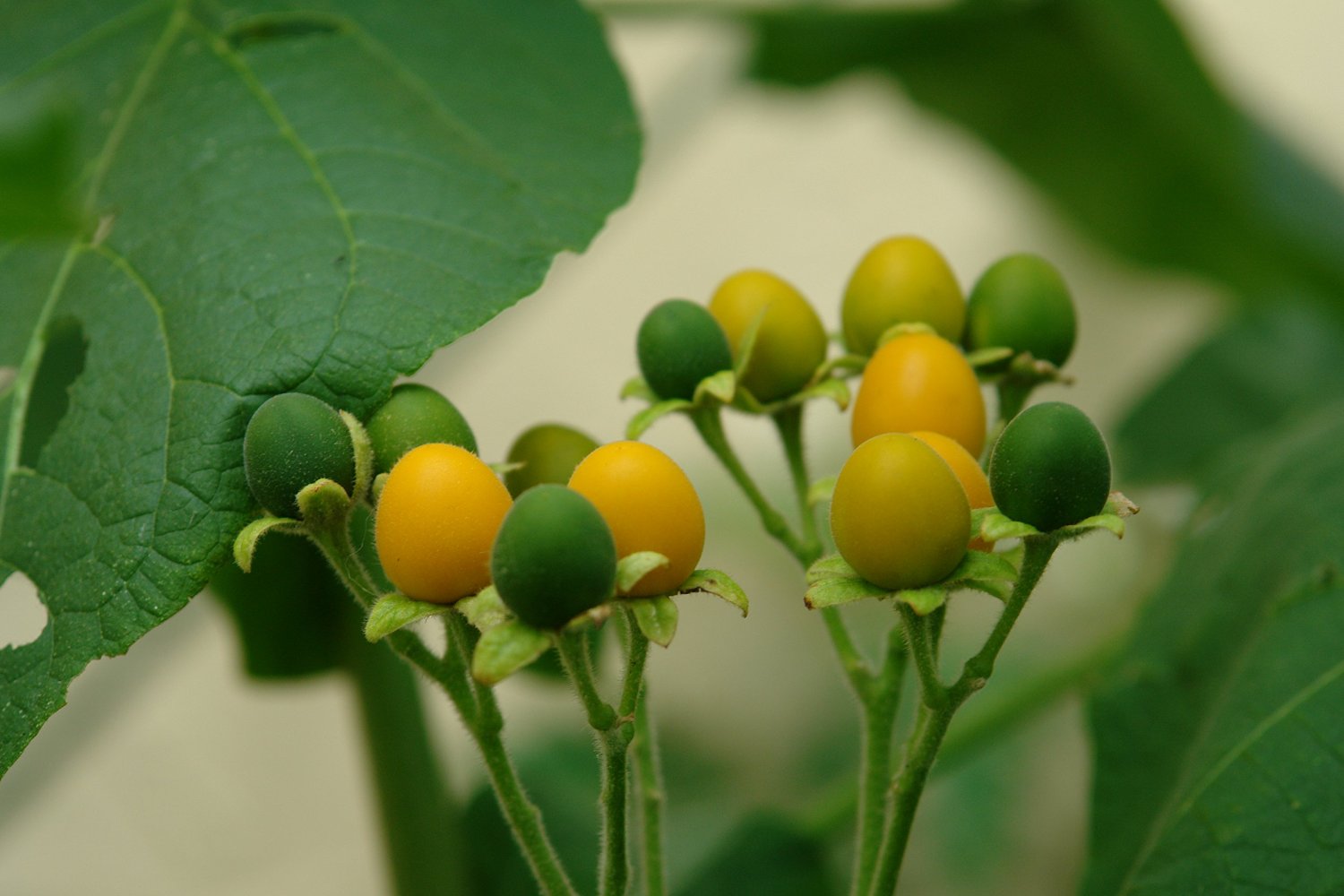Velvetleaf nightshade
(Solanum abutiloides)

Description
Solanum abutiloides is a plant species that belongs to the Solanaceae family. It is commonly known as the "velvetleaf nightshade" or "false abutilon." The species is native to Central America and northern South America, including Brazil, Colombia, Ecuador, and Peru. It is a perennial herb that grows up to 1 meter in height, with woody stems and velvety leaves. Taxonomy and Nomenclature: Solanum abutiloides was first described by Augustin Pyramus de Candolle in 1844. The plant's scientific name is derived from two Latin words, Solanum, meaning "nightshade," and abutiloides, meaning "resembling Abutilon." The plant is commonly referred to as the velvetleaf nightshade due to the velvety texture of its leaves. Description: The velvetleaf nightshade is a perennial herb that grows up to 1 meter in height. The stems of the plant are woody and covered with velvety hairs. The leaves are alternate, oval-shaped, and measure 6-15 cm in length and 4-12 cm in width. The upper surface of the leaves is green and smooth, while the lower surface is covered with fine, velvety hairs. The flowers of Solanum abutiloides are star-shaped, white, and measure approximately 1 cm in diameter. The fruits are round or oblong, measuring 1-1.5 cm in diameter, and are green when immature, turning yellow when ripe. Distribution and Habitat: Solanum abutiloides is native to Central America and northern South America, including Brazil, Colombia, Ecuador, and Peru. It is commonly found in open areas, disturbed sites, and along roadsides. The plant is often considered a weed due to its ability to colonize disturbed areas quickly. It grows best in warm, humid climates and is well adapted to a variety of soil types. Cultivation: Solanum abutiloides is not commonly cultivated as a garden plant. However, it is occasionally grown as an ornamental plant in some regions due to its attractive flowers and velvety foliage. The plant prefers a warm, humid climate and well-drained soil. It can be propagated by seeds or cuttings. Ecological Significance: Solanum abutiloides plays an important ecological role in its native habitat, where it provides a source of food and habitat for a variety of wildlife. The plant's flowers are attractive to pollinators, including bees and butterflies. The fruits are eaten by a variety of birds and mammals, including bats, monkeys, and squirrels. Medicinal Uses: Solanum abutiloides has a long history of use in traditional medicine in its native range. The plant is known for its anti-inflammatory properties and has been used to treat a variety of ailments, including respiratory infections, fever, and skin conditions. The plant contains alkaloids, which are believed to be responsible for its medicinal properties. Toxicity: Solanum abutiloides is toxic to both humans and livestock. The plant contains solanine, a toxic alkaloid that can cause gastrointestinal distress, including vomiting, diarrhea, and abdominal pain. In severe cases, solanine poisoning can cause respiratory failure and death. The plant should be handled with care, and all parts of the plant should be considered toxic. Conservation Status The conservation status of Solanum abutiloides has not been formally assessed by the International Union for Conservation of Nature (IUCN). However, the species is not currently listed under any national or international conservation laws or treaties. It is considered a common and widespread species throughout its native range and is not considered to be at significant risk of extinction. Nonetheless, the impacts of habitat destruction and fragmentation, as well as the introduction of invasive species, may pose a threat to the species in certain regions. Therefore, it is important to monitor the distribution and abundance of Solanum abutiloides to ensure its continued survival. Conclusion: Solanum abutiloides, commonly known as the velvetleaf nightshade, is a perennial herb native to Central and South America. The plant is well adapted to a variety of soil types and is commonly found in open areas and disturbed sites. It plays an important ecological role in its native habitat, providing food and habitat
Taxonomic tree:







